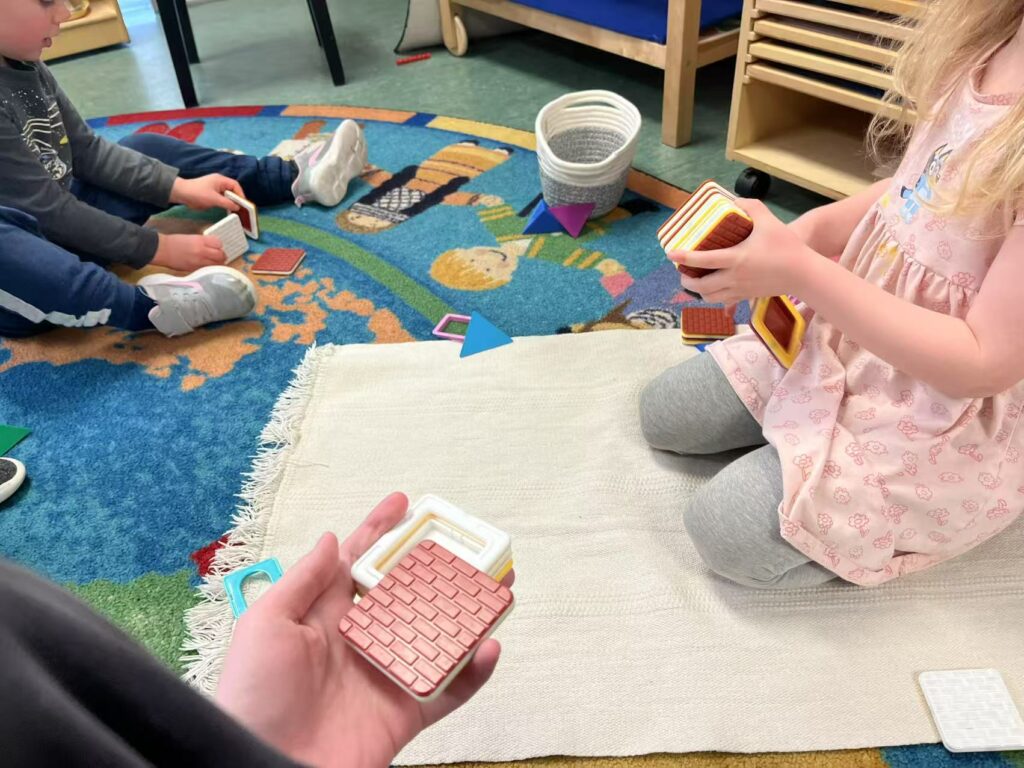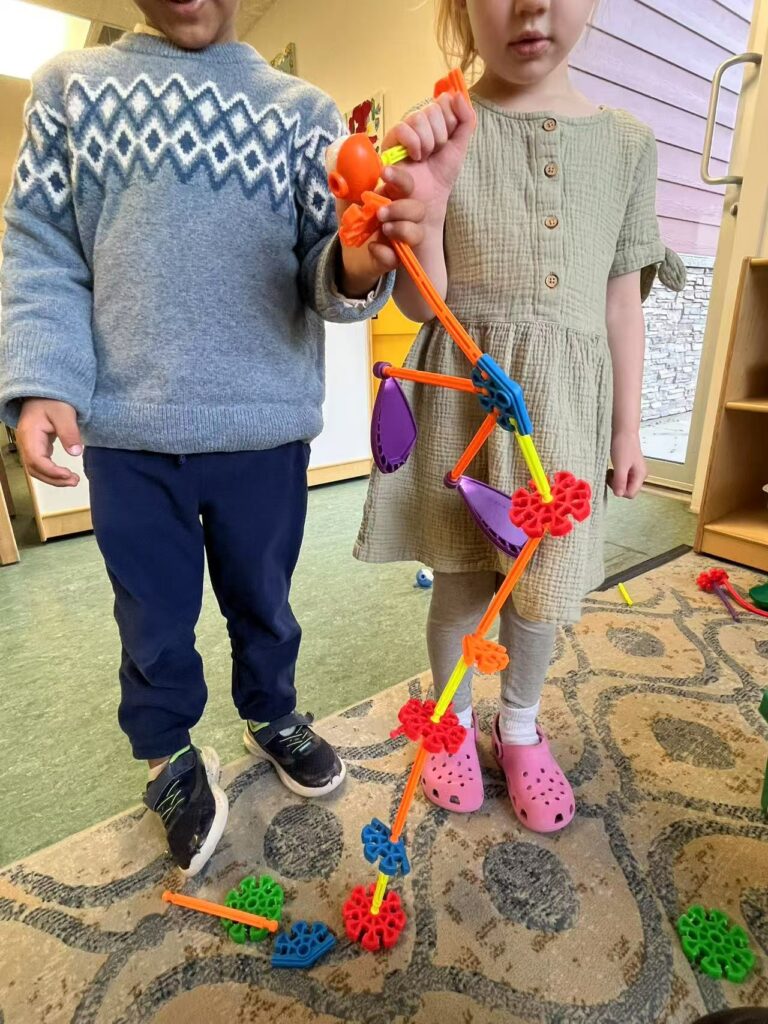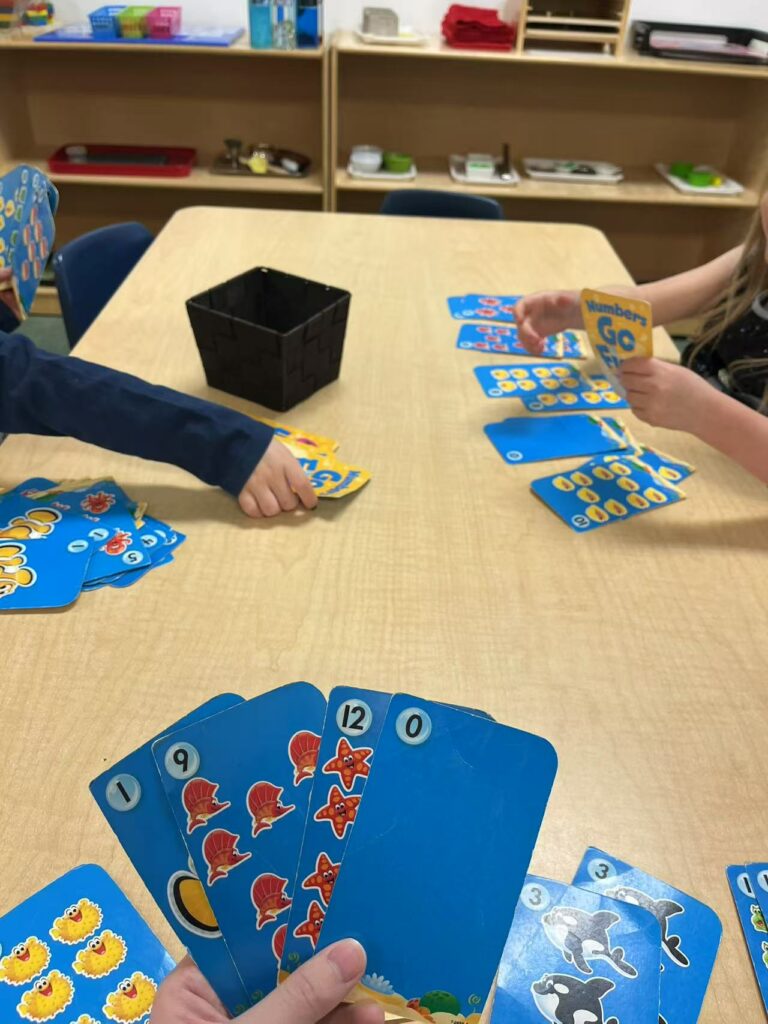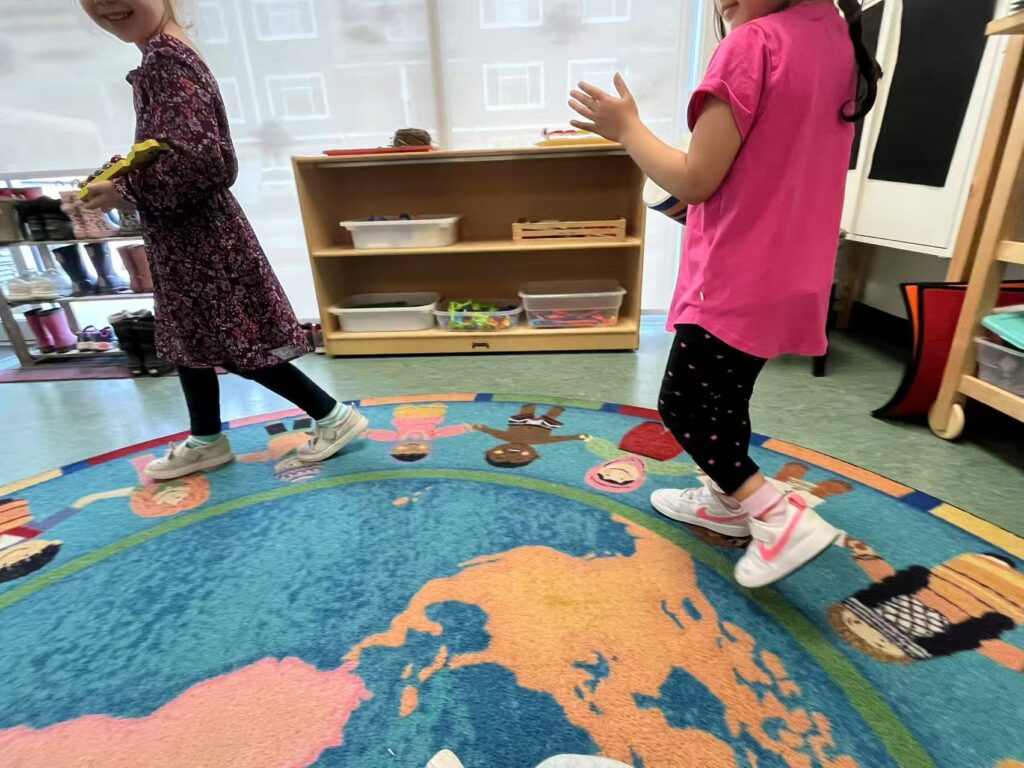Week1:
Building Together:
During an indoor activity, I encouraged the children to organize and build a house on their own. They were very excited and worked together to build it. One girl took on the role of a leader. She gave blocks to me and the other children and helped everyone connect the pieces. Each child worked on a different part, and we put everything together to make a big house.
During this process, the children practiced teamwork and communication. They also experienced both leading and following. I asked questions sometimes to encourage them to share their ideas and solve small challenges together.
This activity showed me that children have amazing leadership skills and creativity. They can organize themselves, divide tasks, and solve problems through teamwork. When children are given the freedom to make decisions, they not only take responsibility but also develop communication and social skills through interaction.

Building:
During a cooperative block-building activity, I was curious to see what the children would create together. When they realized I was excited to see their work, they became more energetic and motivated. They eagerly joined in, shared ideas, and worked together to complete the project. After finishing, they could not wait to show me their creation.
This activity showed me that when children receive attention and encouragement, they become more motivated and creative. As an educator, giving feedback is important. Positive feedback helps children build confidence and reach their full potential.

Week 2:
“Go Fish”:
During a game of “Go Fish,” I played with the children. Each card had a number and a matching fish. The children had to find and match cards with the same number. They were excited to pick cards, look carefully, and try to find a match. When they made a pair, they smiled happily and told me which fish they collected.
I encouraged them to use words to ask for numbers and helped them practice taking turns and following the rules. This game helped the children practice number recognition and matching skills, and also building their social skills and patience.

Playing Music:
During a music activity, the children held instruments and walked in circles around me, playing music for me. They beat the drums, and played the xylophone, creating their own rhythms and melodies. They laughed as they played and looked at me, wanting my attention and encouragement.
I clapped along with their music and told them how much I enjoyed their performance. This activity showed me that music brings children joy and helps them build confidence and creativity. It also helped them practice rhythm and teamwork.

